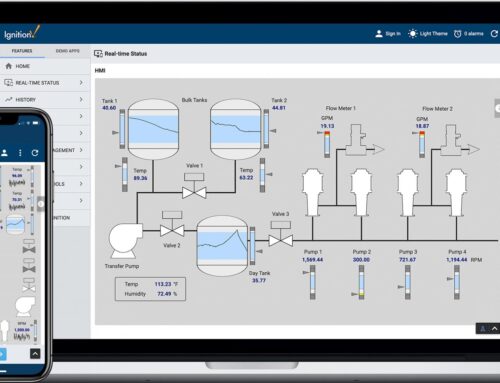Introduction: Tracking Tool Changes and Mold History in Plastic Injection Plants
In the fast-paced world of plastic injection manufacturing, efficiency, precision, and sustainability are paramount. Every misstep in the production process, from tool changeovers to mold usage, can lead to costly downtime, increased scrap, and diminished product quality. To combat these challenges, tracking tool changes and maintaining an accurate mold history have emerged as crucial practices, not just for streamlining operations but also for enhancing the overall lifespan of equipment.
this article explores the meaning of these practices and delves into the mechanisms and technologies that facilitate impeccable tracking and documentation. By employing advanced software solutions and leveraging real-time data analytics, plants can achieve:
- Enhanced Productivity: Rapid and accurate tool changes minimize shutdown times, maintaining production flow.
- Quality Assurance: Detailed mold history helps in identifying wear patterns and potential issues, ensuring consistent product quality.
- Cost Efficiency: Prolonging mold lifespan through proper maintenance scheduling reduces overhead associated with frequent replacements.
- Sustainability Goals: Reducing scrap and optimizing tool usage aligns with clean tech initiatives, decreasing environmental impact.
For example, using a centralized system connected to the plant’s PLC network can enable operators to input and retrieve tool and mold data seamlessly. Imagine a scenario where:
- A plant manager receives an alert when a mold approaches its preventive maintenance threshold.
- A technician accesses the complete life cycle and usage history of a specific tool directly from an intuitive interface.
Through this insightful examination, we will uncover the transformational role of technology in tool tracking and mold management, equipped with actionable recommendations and best practices for implementation. Weather you are a plant operator seeking to enhance efficiency or a sustainability officer aiming to reduce waste, this guide offers authoritative insights to elevate your facility’s operational excellence.
Integrating IoT and MES Systems for Real-Time Monitoring
The integration of IoT and MES systems into plastic injection plants offers a transformative approach to real-time monitoring, specifically for tracking tool changes and mold history. By leveraging IoT devices such as sensors and RFID tags attached to molds, plants can capture a continuous stream of data regarding the location, status, and usage of each tool. This data is seamlessly fed into the MES (Manufacturing execution System) where it is indeed processed and correlated with production schedules and maintenance records. As a notable example, in a large-scale operation like an automotive parts manufacturer, real-time updates on mold usage can preemptively trigger maintenance alerts, thereby minimizing downtime and ensuring continuous quality output.This holistic insight aids in making informed decisions about tool lifecycle management, contributing to reduced wear and efficient utilization of resources.
Effective integration has several advantages, including:
- Predictive Maintenance: Analyzing ancient data to predict when a mold is likely to fail or degrade.
- Real-time Alerts: Immediate notifications when a tool is approaching its expected life cycle threshold.
- Improved Traceability: Tracking the complete history of each mold to ensure compliance and quality standards.
- Enhanced Collaboration: Sharing data across departments for better coordination and faster resolution of issues.
an example of this in action is the use of RFID tagging at consumer goods manufacturer Mondelēz International, where mold changes are tracked to improve the traceability and efficiency of production cycles. By implementing these systems, not only is operational efficiency enhanced, but it also aligns with sustainability goals by optimizing material usage and reducing waste, embodying a commitment to clean tech principles.
Best Practices in Archiving and Accessing Historical Mold Data
Effective archiving and accessing of historical mold data are crucial for maintaining operational efficiency and minimizing downtime in plastic injection plants. Proper data archiving protocols ensure that valuable insights into mold performance,maintenance schedules,and tool wear can be leveraged to optimize production processes. A sophisticated solution would involve the implementation of a SCADA system like Ignition, which can store vast amounts of data due to its seamless integration with various databases such as SQL Server. By tagging each mold with unique identifiers and logging data such as cycle times, temperature variances, and hydraulic pressures, facilities can quickly identify trends and address potential issues before they escalate. Tools like Ignition Dashboard provide visualization, enabling operators to access historical data effortlessly, ensuring informed decision-making. As an example, a plant might discover that a particular mold type consistently operates below expected efficiency after 40 production cycles, prompting preemptive maintenance actions.
When considering best practices for data accessibility, it’s essential to strike a balance between robust security protocols and user-friendly interfaces. Establishing role-based access ensures that only authorized personnel can retrieve sensitive mold history data, reducing the risk of data breaches. Ideally, the historical data system should offer multi-device accessibility, allowing engineers to retrieve mold information from tablets or smartphones on the factory floor. Moreover, leveraging cloud technology can offer vast storage capabilities while maintaining high data integrity and cybersecurity standards. Real-world applications of these principles can be seen in companies like Innorobix, where plant managers access real-time and historical data through a dedicated portal, enhancing coordination among team members and streamlining dialog between departments. This practice not only boosts productivity but also contributes to a reduction in waste and energy consumption, aligning with clean tech innovations focused on sustainability.
Leveraging Predictive Analytics to Optimize Tool Change Intervals
In the realm of plastic injection molding, predictive analytics serves as a game-changer by optimizing tool change intervals through the analysis of historical and real-time data. By employing predictive models, plant managers can interpret data from hundreds of processes—such as temperature variations, cycle times, and pressure points—that influence mold performance. As an example, an injection plant utilizing sensors connected to a centralized system like Ignition could be alerted to nuanced shifts in operational conditions, prompting preemptive tool changes. This reduces unnecessary downtime and ensures high-quality output. By analyzing patterns and multiple data points, the plant can predict the optimal time for tool changes, thereby extending tool life, minimizing scrap, and ensuring sustainable operations.
In practical request, detailed logging of mold history becomes crucial. Consider a scenario where each mold carries a unique identifier tracked throughout its lifecycle, documenting every tool change, maintenance performed, and anomaly detected. Through connectivity to PLCs (Programmable Logic Controllers) and utilizing Ignition’s powerful SCADA capabilities, this data is visualized and analyzed for forecasting future mold behavior. This approach not only improves tool utilization but also contributes to energy efficiency by reducing idle time and maintaining mold temperature stability, aligning with clean-tech initiatives. Manufacturers utilizing this strategy have reportedly seen up to a 30% reduction in tooling costs and significant enhancement in overall plant efficiency.
The Conclusion
the effective tracking of tool changes and mold history is pivotal for optimizing operations in plastic injection plants. By implementing robust monitoring systems, manufacturers can enhance product quality, reduce downtime, and extend the lifespan of molds. Key takeaways from this exploration include:
- Enhanced Precision: Implementing detailed logging of tool changes to pinpoint anomalies and schedule maintenance proactively.
- Increased Efficiency: Utilizing historical mold data to improve scheduling and reduce unexpected disruptions.
- Cost savings: Predictive maintenance strategies that lead to reduced scrap rates and material wastage.
- Sustainability Focus: Leveraging data insights to minimize energy consumption and contribute to greener operations.
By leveraging technology solutions like those provided by Innorobix, plants can achieve these benefits and more, leading to smarter, cleaner manufacturing processes. If you’re ready to take your plant’s operations to the next level, we invite you to explore our automation solutions. Reach out to request a tailored consultation or schedule a live demo with our expert team. Let Innorobix guide you towards innovation and efficiency in your plastic injection operations.
















